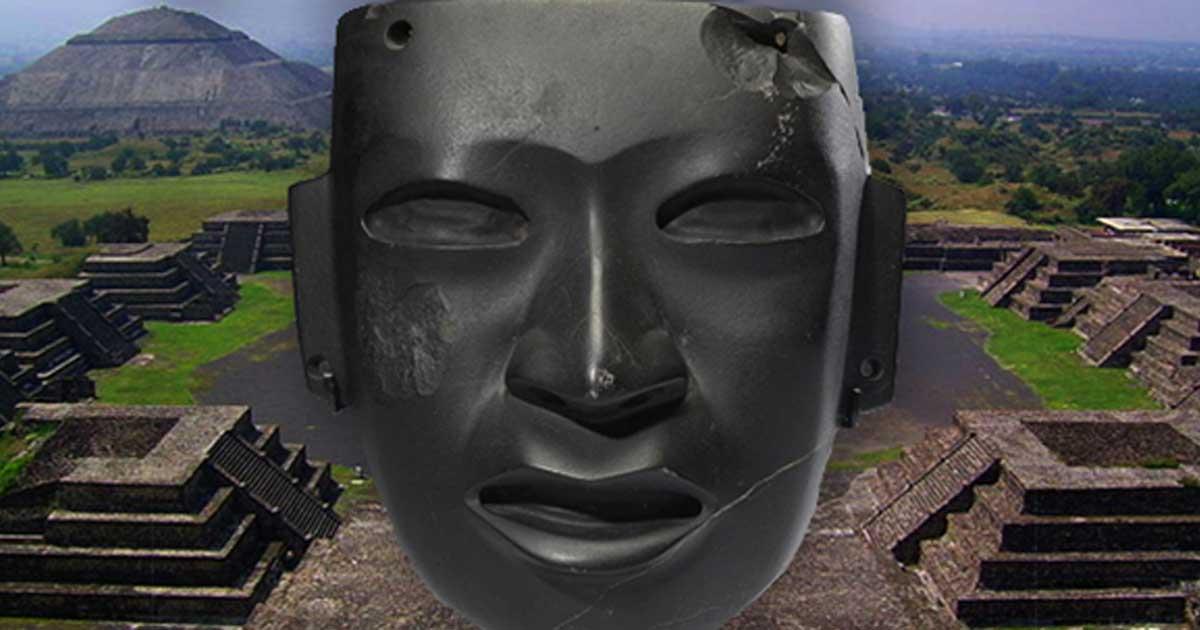
At its peak, around 200 AD, Teotihuacan counted a population of well over 125,000, boasted hundreds of temples and palaces, and three massive pyramids named after the Sun, the Moon, and the Feathered Serpent (itself a symbol of the planet Venus). The ruins of what is often called the Rome of America, Teotihuacan, lie a mere 50 km (31 miles) North-East of modern day Mexico City.
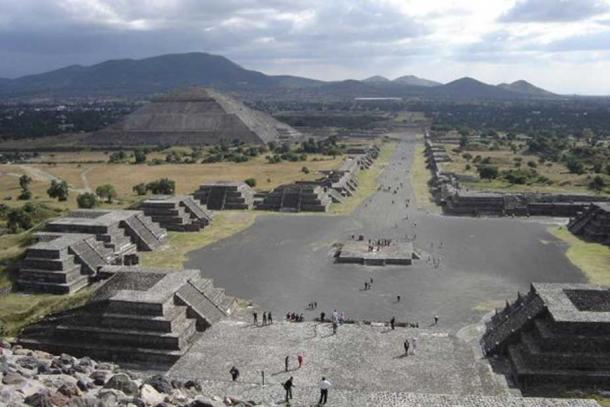
A view of Teotihuacan, Mexico. (CC BY-SA 2.0)
City of the Gods
By the time the Aztecs came onto the scene, at the beginning of the 14th century AD, the ancient metropolis already lay in ruins, its great pyramids covered in shrubs and vegetation. No doubt the Aztecs were left with the same questions that every modern visitor to the site is confronted with today. Who were the mysterious builders of Teotihuacan, and where had they come from? To the Aztecs, the answer to this question could be no other than the Gods themselves.
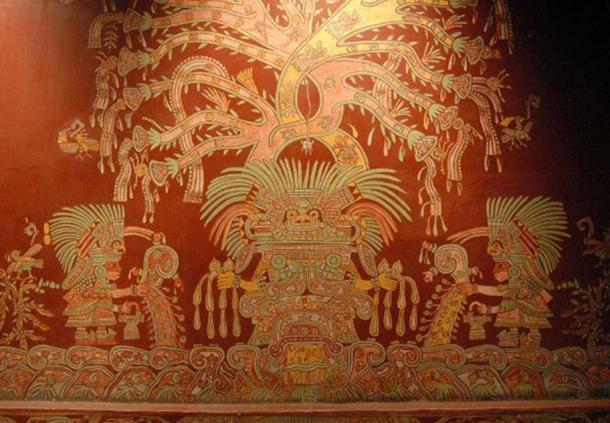
A mural showing what has been identified as the Great Goddess of Teotihuacan. (CC BY 2.0)
Their legends told of the arrival of wise men from a land beyond the Sea: “They say they came to this land to rule over it”; wrote Spanish chronicler Bernardino of Sahagún:
“They came from the sea on ships, a multitude of them, and landed on the shore of the sea, to the North…from there they went on, seeking the white mountains, the smoky mountains…led by their priests and by the voice of their gods. Finally they came to the place that they called Tamoanchan…and there they settled for some time…but it was not for long, for their wise masters left, took again to their boats…bringing back with them all their holy books and their sacred images.”
The identity of Teotihuacan with the Tamoanchan, Tollan, or Tlapallan of the Aztec and Nahua legends, has been a source of constant debate among historians: The great city of Teotihuacan literally emerged from the mists of the Mesoamerican pre-classic period as a perfectly planned city, with a fully developed architecture, and an advanced astronomy, mathematics, and calendar.
- 27 Little Known Facts About Teotihuacan
- Ancient Inhabitants of the Great City of Teotihuacan in Mexico Farmed Rabbits
- Archaeologists Uncover a Symbolic Code Hidden in the Crater-Filled Plaza of the Moon in Teotihuacan
The ruins that survive today make it abundantly clear, however, that in the long sequence of construction of the site, the earliest layers almost invariably show the greatest complexity and sophistication.
Megalithic Builders and the Avenue of the Dead
The modern visitor to Teotihuacan will hardly find any evidence of the original “City of the Gods”, as it would have stood, according to Aztec myths, at the beginning of the present World Age, in 3,114 BC. (This is the date of the beginning of the Fifth Sun according to the Codex Vaticanus 3739, Codex Ríos). It lies buried under layers upon layers of subsequent occupations, and rather imaginative modern reconstructions (a large part of which resulting from the early 1900s restorations of Leopoldo Batres). Yet, one needs to walk not much further than the tourist-beaten path along the 4-km (2.5-mile) -long Avenue of the Dead to find evidence of a much more mysterious and still largely unexplored past: Almost all the construction that is visible in Teotihuacan today consists of loose lava stones, roughly cemented together, mixed with adobe and a filling of rubble.
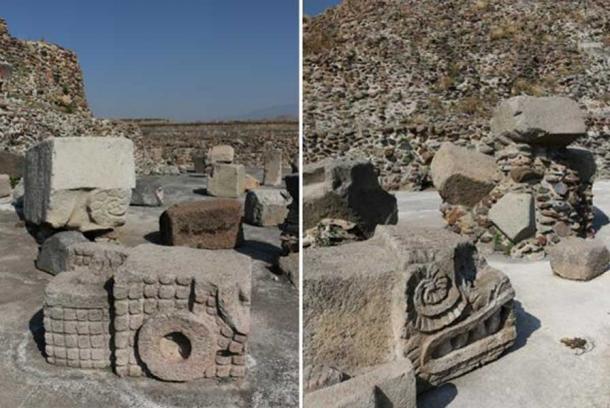
Megalithic stone blocks scattered in the vicinity of the pyramid of the Feathered Serpents at Teotihuacan. (Photos by Author Marco M. Vigato)
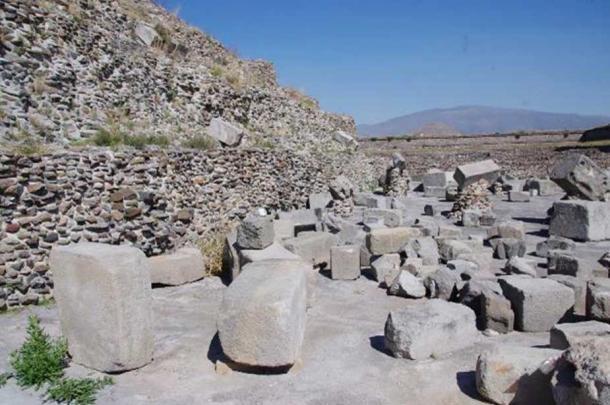
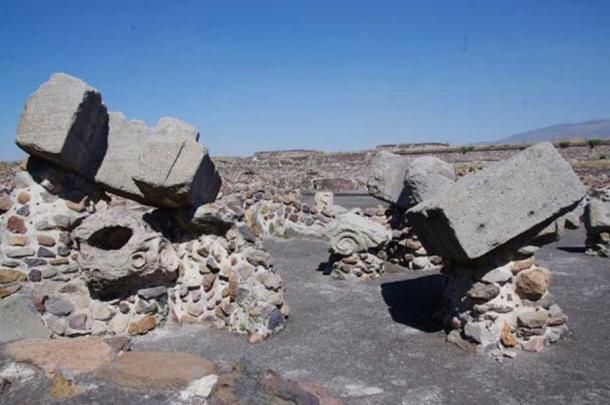
Megalithic stone blocks scattered in the vicinity of the pyramid of the Feathered Serpents at Teotihuacan. (Photos by Author Marco M. Vigato)
It is true that some of the façades were originally stuccoed and painted, but these have mostly faded or disappeared, so that the impression of monumentality of even the largest pyramids immediately disappears once one examines these structures from a closer distance.
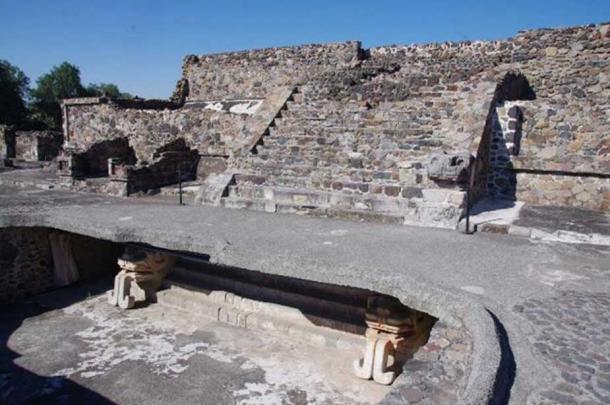
Example of super-imposed buildings at complex situated along the Avenue of the Dead (Photo by Author Marco M. Vigato)
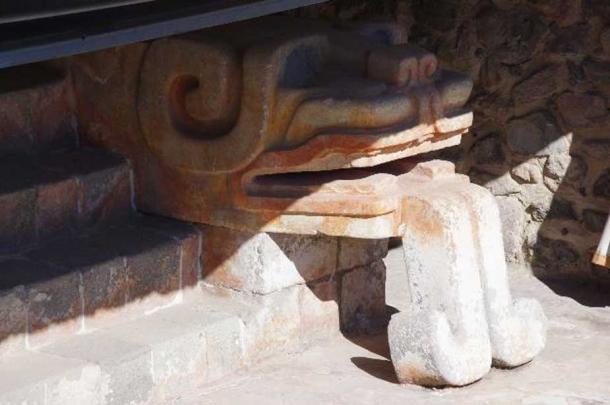
Megalithic stone head from the earlier layer of construction. (Photo by Author Marco M. Vigato)
It is therefore even more surprising to find evidence among the earliest layers of construction of an entirely different style of architecture employing enormous, finely cut and polished blocks of stone, which could very well be called megalithic.
A portion of these earlier megalithic structures can be appreciated on the western face of the pyramid of the Feathered Serpents. Here, a monumental façade of finely sculptured stone was uncovered under a later period “adosada” platform, which was added to the pyramid at some point during the 4th century AD. Even more puzzling are a number of enormous blocks of stone that lie scattered in a small esplanade towards the back of the pyramid. These stones appear to be of an entirely different kind, even relative to the ones that cover the western façade of the pyramid.
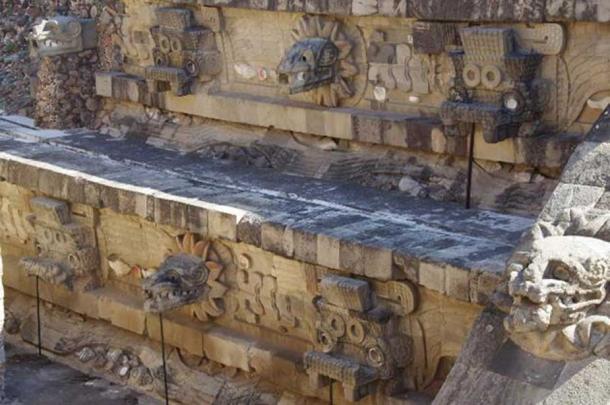
Monumental sculptured façade on the Western side of the pyramid of the Feathered Serpents. (Photo by Author Marco M. Vigato)
Not only are we here confronted with some truly gigantic monoliths, but also the type of stone and workmanship appear to be entirely different and far superior to any of the other exposed sections of the pyramid’s stone casing.
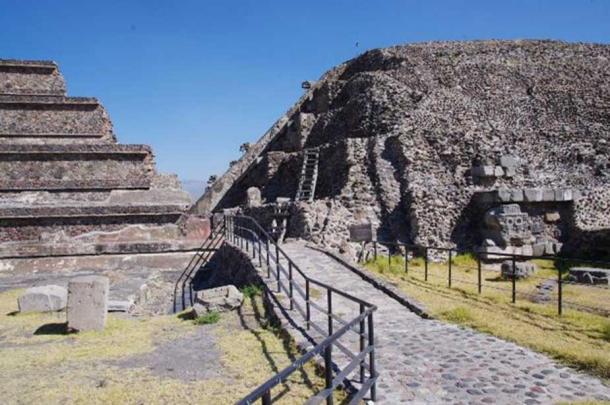
South-West corner of the pyramid of the Feathered Serpents, where the older construction phase and several megalithic stone blocks are visible under the later “adosada” platform. (Photo by Author Marco M. Vigato)
Silence From Academia
For their location in an area which is normally off-limits to visitors, these monoliths have been, so far, seldom published or considered in guides or publications on Teotihuacan. There seems, moreover, to be a general academic silence concerning their age, stylistic differences, and original collocation.
Curious Monoliths
The megalithic stone blocks, many of which are covered in sculptures, appear to have been thrown in no particular order as filling material for the construction of the main pyramid body, which is believed to date to the 2nd century AD. Among these are some colossal serpent heads, over two meters (6.5 feet) in length and weighting an estimate of 4 tons, and also some curious U-shaped monoliths, with a weight probably in excess of 10 tons. Their general workmanship is extremely accurate, with complex concave and convex surfaces and perfectly planar sides.
- River of Mercury in Underworld of Pyramid of Quetzalcoatl may lead to Royal Tomb
- Ancient People of Teotihuacan Drank Alcohol as Nutrient Booster
The rock in which the larger megalithic stone blocks were carved is a kind of highly compact gray andesite. A petrographic study of similar colossal andesite sculptures from Teotihuacan by Robert Heizer and Howell Williams pointed to the most likely source of the andesite employed at Teotihuacan as Mount Tlaloc, in the vicinity of the Pueblo of San Miguel Coatlinchan— a distance of 25 kilometers (15.5 miles) from the ceremonial site. This is certainly the source of the stone used for the largest monolith found in situ at Teotihuacan, the colossal Diosa del Agua or “Water Goddess”, which is estimated to weigh over 25 tons.
Based on stylistic analogies with the other Teotihuacan monoliths, Heizer and Williams also concluded that an immense, unfinished sculpture found in the quarry near Coatlinchan was meant to be transported to Teotihuacan. The statue, known as the monolith of Coatlinchan, is one of the largest in the Americas, with an estimated weight of over 200 tons. It is 7.1 meters (23.2 feet) long, 3.8 meters (12.4 feet) wide and four meters (13.1 feet) thick. Its transportation to Mexico City (where it now stands in front of the National Museum of Anthropology) in 1964 required a specially designed 112-wheeled tractor. If finished, the sculpture would have been carried on rafts across the lake of Texcoco, and then on rollers or sledges until its final destination.
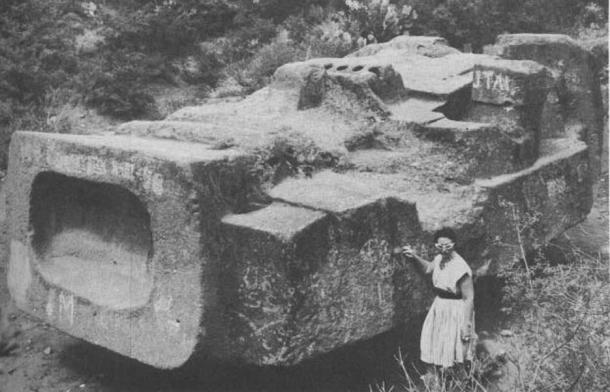
The great monolith of Coatlinchan still in the quarries, before its removal and transportation to Mexico City. (Source: Robert F. Heizer, Howell Williams, Stones used for colossal sculpture at or near Teotihuacan, Contributions of the University of California Archaeological Research Facility, 1965)
The unfinished state of the monolith of Coatlinchan and of the countless megalithic stone blocks that lie scattered around the site of Teotihuacan are suggestive of the sudden arrival and departure of a very technically advanced elite: Over the following centuries, construction resumed and continued at Teotihuacan, although in much cruder form, recycling many of the megalithic stones and structures left behind by the original builders.

Megalithic stone blocks scattered in the vicinity of the pyramid of the Feathered Serpents at Teotihuacan. (Photos by Author Marco M. Vigato)

Megalithic stone blocks scattered in the vicinity of the pyramid of the Feathered Serpents at Teotihuacan. (Photos by Author Marco M. Vigato)
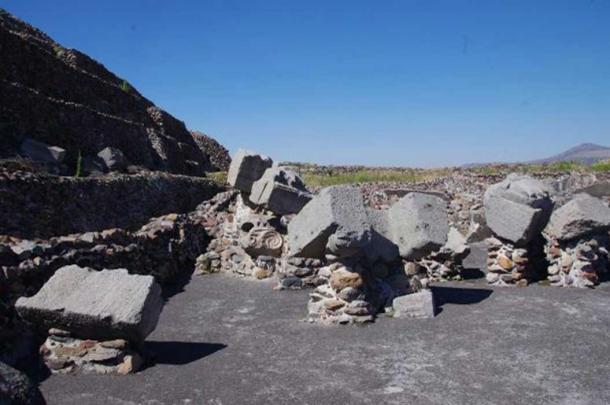
Megalithic stone blocks scattered in the vicinity of the pyramid of the Feathered Serpents at Teotihuacan. (Photos by Author Marco M. Vigato)
A Hidden Underworld?
Megaliths and colossal sculptures may be not the only remains left behind by the original builders of Teotihuacan, for a vast network of tunnels extends under much of the ancient site. The reality of this vast and still largely unexplored network has only recently come to light. In a following article, we will explore a portion of these tunnels in search of traces left behind by its still mysterious builders.
Marco M. Vigato has travelled extensively across Europe, the Middle East, North Africa, South-East Asia, North and South America and is an independent researcher into ancient mysteries and megalithic civilizations. His expeditions and photographs dedicated to ancient history, adventure travel and archaeology can be found at Uncharted Ruins.
--
Top Image: Teotihuacán-style mask, Classical period (CC BY-SA 3.0) and ‘City of the Gods’ – Teotihuacan, Mexico (Public Domain); Deriv.
By Marco Vigato
References
Bernardino de Sahagún [1500-1590 AD], Codice Matritense de la Real Academia, folio 191,192
Robert F. Heizer, Howell Williams, Stones used for colossal sculpture at or near Teotihuacan, Contributions of the University of California Archaeological Research Facility, 1965
Matthew Shaer, A secret tunnel found in Mexico may finally solve the mysteries of Teotihuacan, Smithsonian Magazine, June 2016
UNESCO, 2017. ‘Prehispanic City of Teotihuacan’ WHC.UNESCO.org [Online] Available at: http://whc.unesco.org/en/list/414



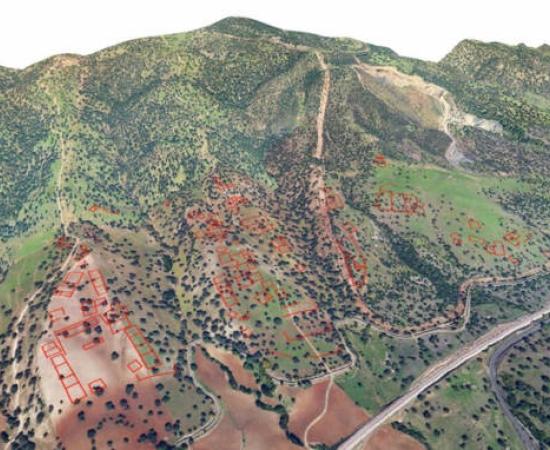
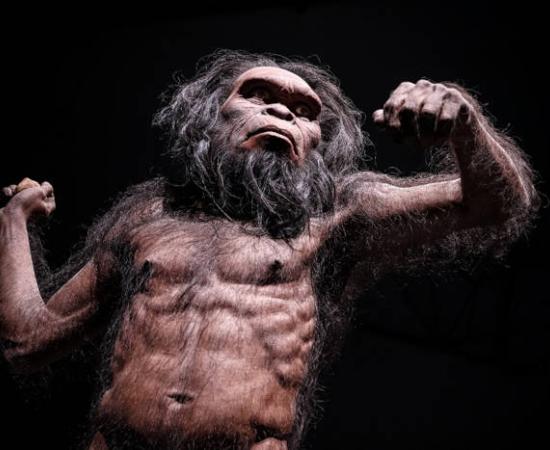
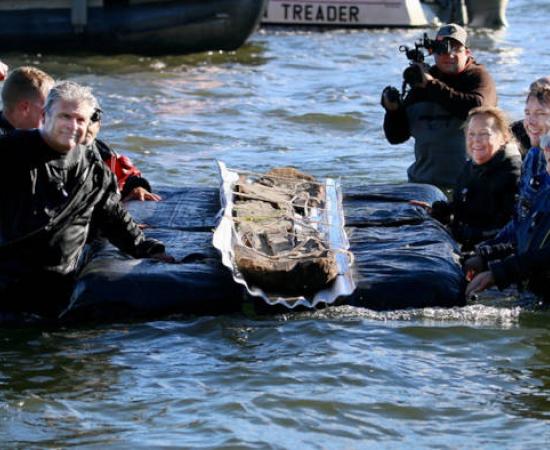
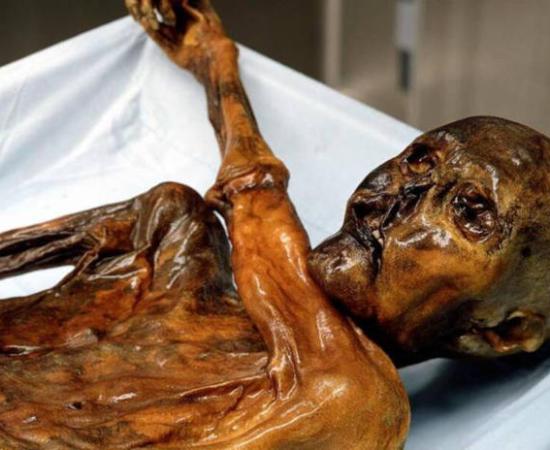
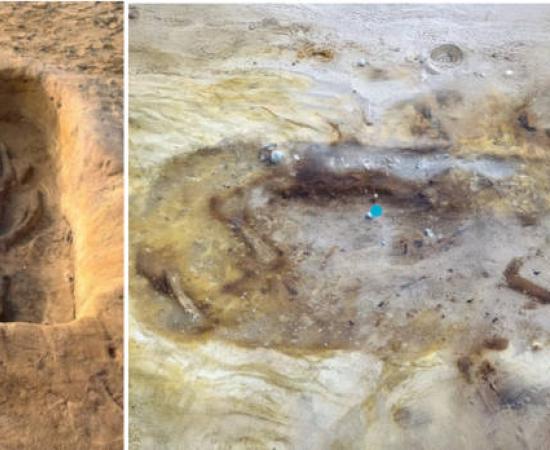
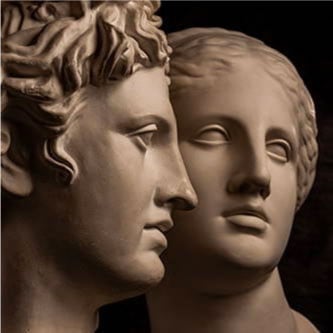
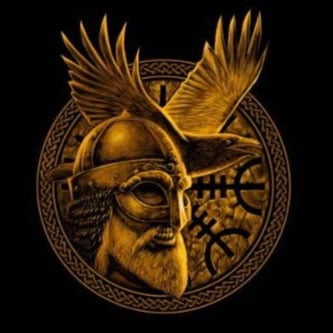
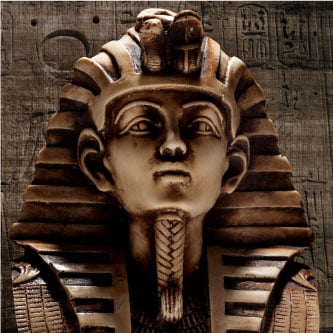





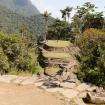
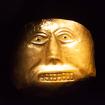
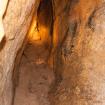
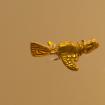

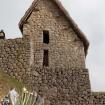
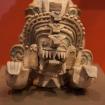
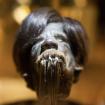

Interesting, good info. Now
Permalink
Interesting, good info. Now let’s get into those tunnels. Maybe some bold explorer can go live with lights, camera action, and also give the public the same first view of it. Should be the new trend! And NO MORE of, “...a general academic silence concerning their age, stylistic differences, and original collocation."